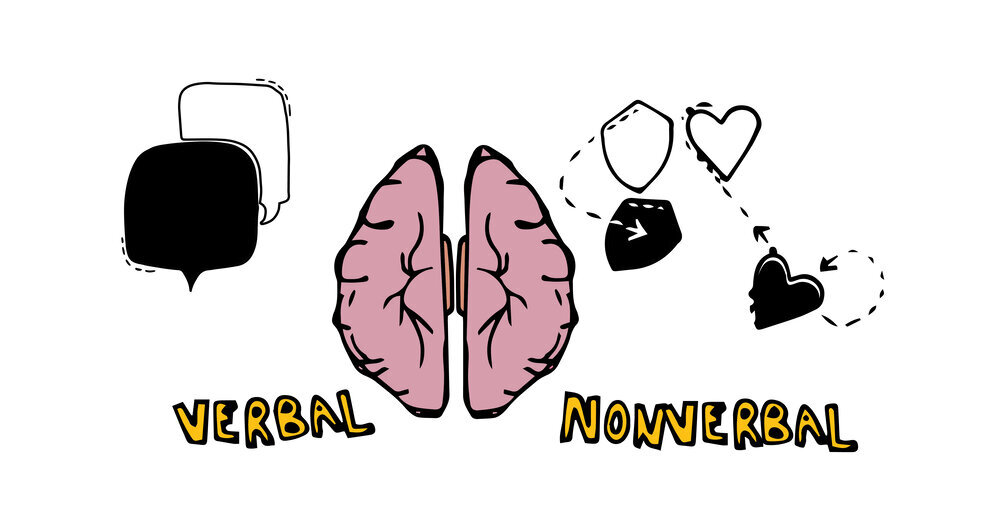The Power of Pictures - Dual Coding
As science teachers, we realise the importance of vocabulary. In one lesson, there will be many new complex words which need to be taught and linked to the content.
Research confirms that students need multiple meaningful exposures to a word to be able to really commit its definition, spelling and contextual information to memory.[1]
We are passionate about building vocabulary in science - especially for those students who might find learning new vocabulary most challenging. This is why we created our resources using a strategy called Dual Coding.
What is Dual Coding?
Dual coding is a strategy to present information which simultaneously activates both the verbal and nonverbal channels in the brain.
Both of these channels are used to recognise and process information. Studies have shown that their combination is particularly helpful.
Dual coding theory looks at ways to improve the concreteness, or the tangibility of the reference, and the imagery value of language, the degree to which it activates a mental image.
Andrea Silani and Caroline Schaal, co-founders of Lift Lessons, used dual coding within their own classrooms:
“We have seen the transformative improvement in vocabulary and understanding that can happen when students use Dual Coding effectively as a strategy to build memories.” Caroline Schaal, Co-Founder of Lift Lessons
Mental Imaging in Science
Signs that students find imaging (producing mental images) difficult range between the following:
a tendency not to remember the pictures brought to mind through reading imagery-heavy texts (such as some poetry),
problems visualising geometric proofs,
a difficulty with spelling words or printing letters.
In science, we often see the difficulty students might have in developing the ability to form their own mental image using words alone.
The word ‘hot’ is concrete; we can feel what it means. However words in the curriculum like ‘thermal store’, or ‘thermal transfer’, are abstract. Unfortunately, without these abstract words many of the scientific ideas in the curriculum are inaccessible.
Dual coding is one method to improve the accessibility of the scientific language.
Research has shown that academic vocabulary (like the words used when studying science) can be much more difficult to memorise and understand. This is because the ideas are often very abstract.[2][4]
Using Video to Support Dual Coding
Video, when designed to do so, can help by showing students a dual coding approach. Video can work to make it easier to understand where words come from and what they mean by linking the word to mental images. Videos can also combine verbal and nonverbal information which is an important part of dual coding theory.
“In science, there are many instances when the learning concept is so abstract that students need a starting point. Lift Lessons' videos provide this by placing the word in a real world context.” Caroline Schaal, Co-Founder of Lift Lessons
Our aim at Lift Lessons is to use the power of dual coding and other evidence-based strategies, to support students to learn and practise words independently, and to empower all students with the language for learning.
Citations and Bibliography
[1] Beck, I. & McKeown, M. (2004). Direct and Rich Vocabulary Instruction. Vocabulary Instruction, New York: Guilford Press. Accessed with thanks to the Annenberg Foundation, Dec 2019, at https://www.learner.org/workshops/teachreading35/pdf/vocab_Instruction.pdf
[2] Clark, J., & Paivio, A. (1991). Dual Coding Theory and Education. Educational Psychology Review, 3(3), 149-210. Retrieved from http://nschwartz.yourweb.csuchico.edu/Clark%20&%20Paivio.pdf
[3] Hall, M., & Stahl, K. (2012). Devillinizing video in support of comprehension and vocabulary instruction. The Reading Teacher, 65(6), 403-406. Retrieved from http://www.jstor.org/stable/41853046
[4] Lesaux, N., Kieffer, M., Kelley, J., & Harris, J. (2014). Effects of Academic Vocabulary Instruction for Linguistically Diverse Adolescents: Evidence From a Randomized Field Trial. American Educational Research Journal, 51(6), 1159-1194. Retrieved from https://www.jstor.org/stable/24546714
[5] Xin, J.F., and Rieth, H. (2001) Video-assisted vocabulary instruction for elementary school students with learning disabilities. Information Technology in Childhood Education Annual, 12, 87-103. Accessed Aug 2019 at https://www.learntechlib.org/primary/j/ITCE/v/2001/n/1/
Bibliography
Beck, I. & McKeown, M. (2004). Direct and Rich Vocabulary Instruction. Vocabulary Instruction, New York: Guilford Press. Accessed with thanks to the Annenberg Foundation, Dec 2019, at https://www.learner.org/workshops/teachreading35/pdf/vocab_Instruction.pdf
Johnson, G., Gersten, R., & Carnine, D. (1987). Effects of instructional Design Variables on Vocabulary Acquisition of LD Students. Journal of Learning Disabilities, 20(4), 206–213. doi: 10.1177/002221948702000402
Moody, S., Hu, X., Kuo, L.-J., Jouhar, M., Xu, Z., & Lee, S. (2018). Vocabulary Instruction: A Critical Analysis of Theories, Research, and Practice. Education Sciences, 8(4), 180. http://doi.org/10.3390/educsci8040180






